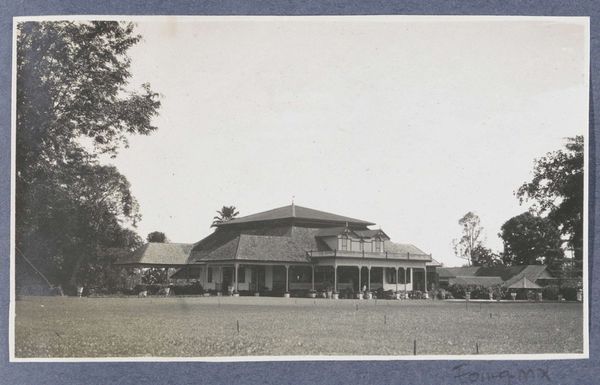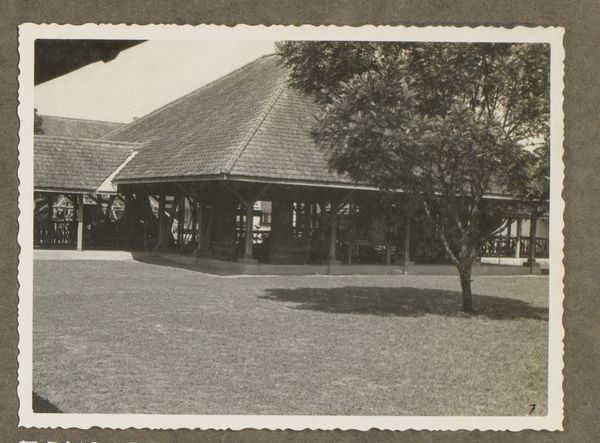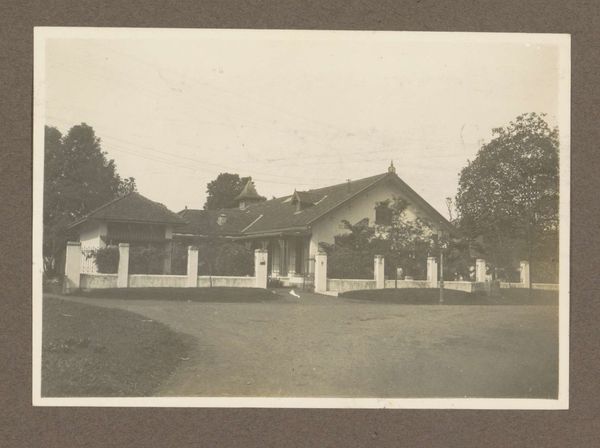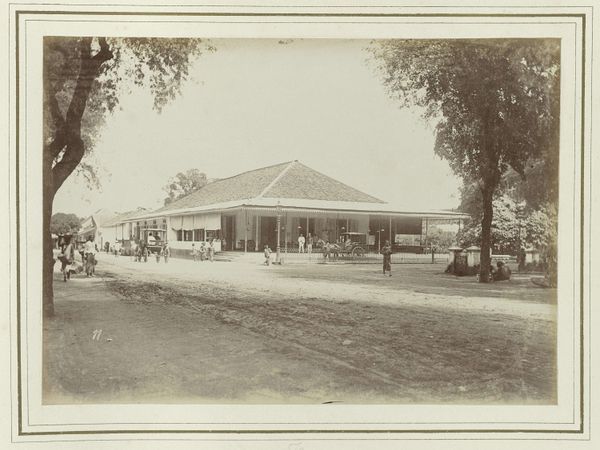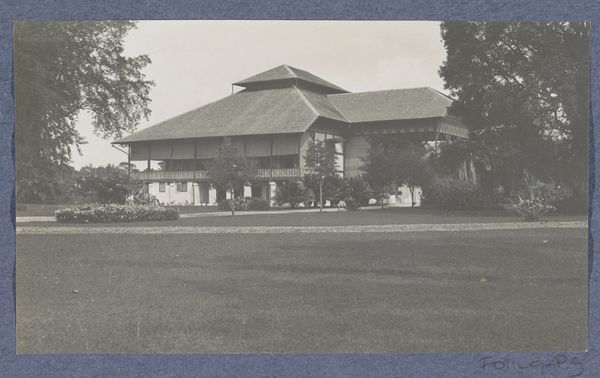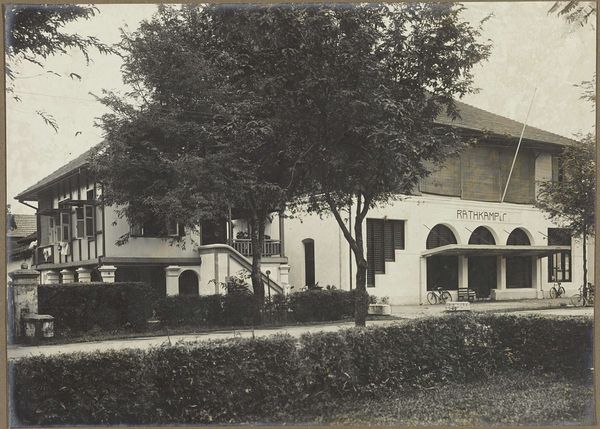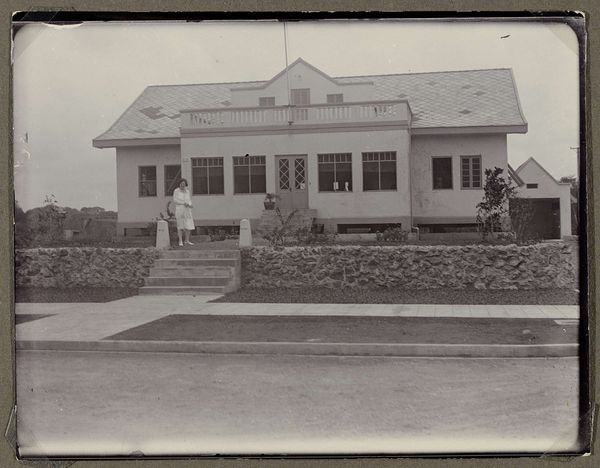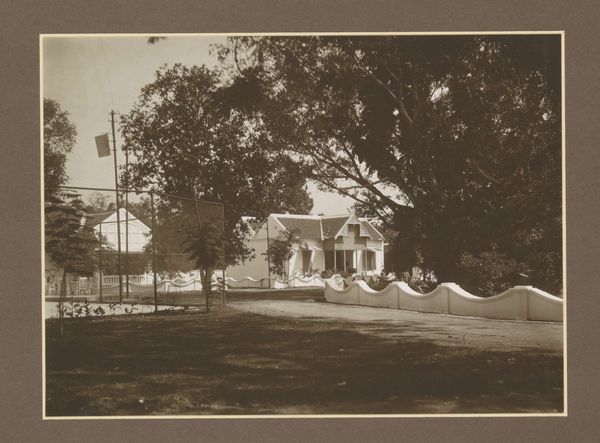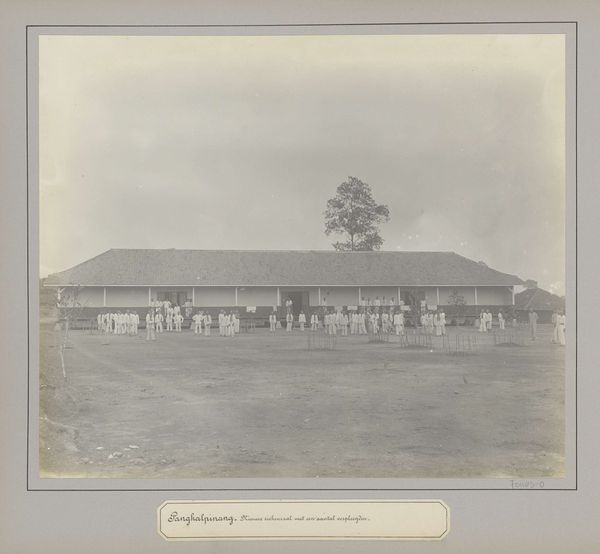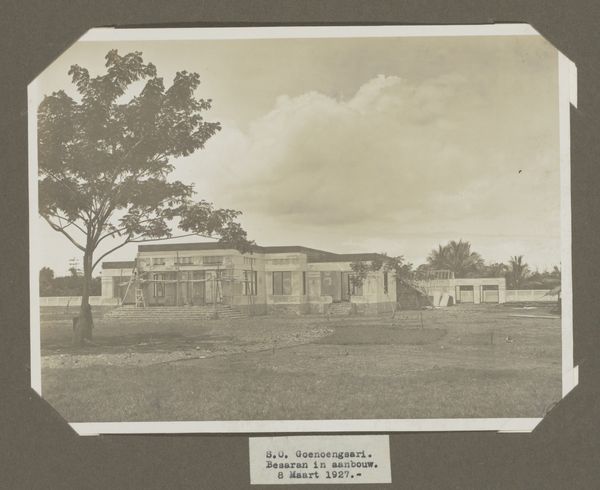
Huis met tuin van cultuuronderneming Gedong Djohore van de Deli-Batavia Maatschappij bij Medan c. 1900 - 1920
0:00
0:00
anonymous
Rijksmuseum
photography, site-specific, architecture
#
landscape
#
photography
#
site-specific
#
architecture
#
realism
Dimensions: height 83 mm, width 137 mm
Copyright: Rijks Museum: Open Domain
Curator: This photograph, taken anonymously between 1900 and 1920, depicts the “Huis met tuin van cultuuronderneming Gedong Djohore van de Deli-Batavia Maatschappij bij Medan.” This translates to “House with garden of the Gedong Djohore cultural enterprise of the Deli-Batavia Company near Medan.” The image resides here at the Rijksmuseum. Editor: My first impression is one of tranquility, almost pastoral, despite the industrial associations in the name. The symmetrical composition is pleasing; the house anchoring the left, balanced by that massive tree on the right. The lawn, or open field, is a minimalist statement that contrasts with the complexity of the architecture and foliage. Curator: It is indeed a composition pregnant with contrasts. Medan, now a bustling city in Indonesia, was then at the heart of Dutch colonial agricultural enterprises, particularly tobacco cultivation. This image provides a window into the visual landscape of that complex historical moment, capturing a domestic space interwoven with imperial economic ambitions. Editor: Right. You see this house acting like a symbolic center in this matrix? Its architecture…a marriage of vernacular and colonial styles? The tiered roof hints at Southeast Asian forms, but then it’s hybridized by those neat colonial columns and the strict symmetry that speaks volumes of European formalism. The materials also blend styles…but that balance doesn't convey tension between those styles? Curator: The balance, however aesthetically appealing, belies the inherent tensions of the colonial context. This image portrays the power dynamics present within colonial landscape: land use and resources controlled by colonizers, manifested here through manicured spaces versus the untouched, almost brooding presence of the large tree, perhaps indicative of the natural world that predates, but also yields to the cultural enterprise of this residence. Editor: It's all cleverly framed in a simple yet poignant play of dark and light tones. I appreciate that its realism manages to evoke a dreamlike detachment and invites closer viewing and reflection. Curator: Absolutely, it presents a facade, deliberately constructed. But by appreciating that construction we get glimpses into a period of enormous transformation and often violent change—as seen in the domestic space and how it shapes our understandings. Editor: Well, thinking of it that way adds considerable weight to my initial observation about it feeling "pastoral." It's like a ghost whispering from beneath the veneer of respectability. Curator: Indeed, a photograph that initially presents as serene becomes a site of contested narratives the more you examine its historical echoes.
Comments
No comments
Be the first to comment and join the conversation on the ultimate creative platform.
